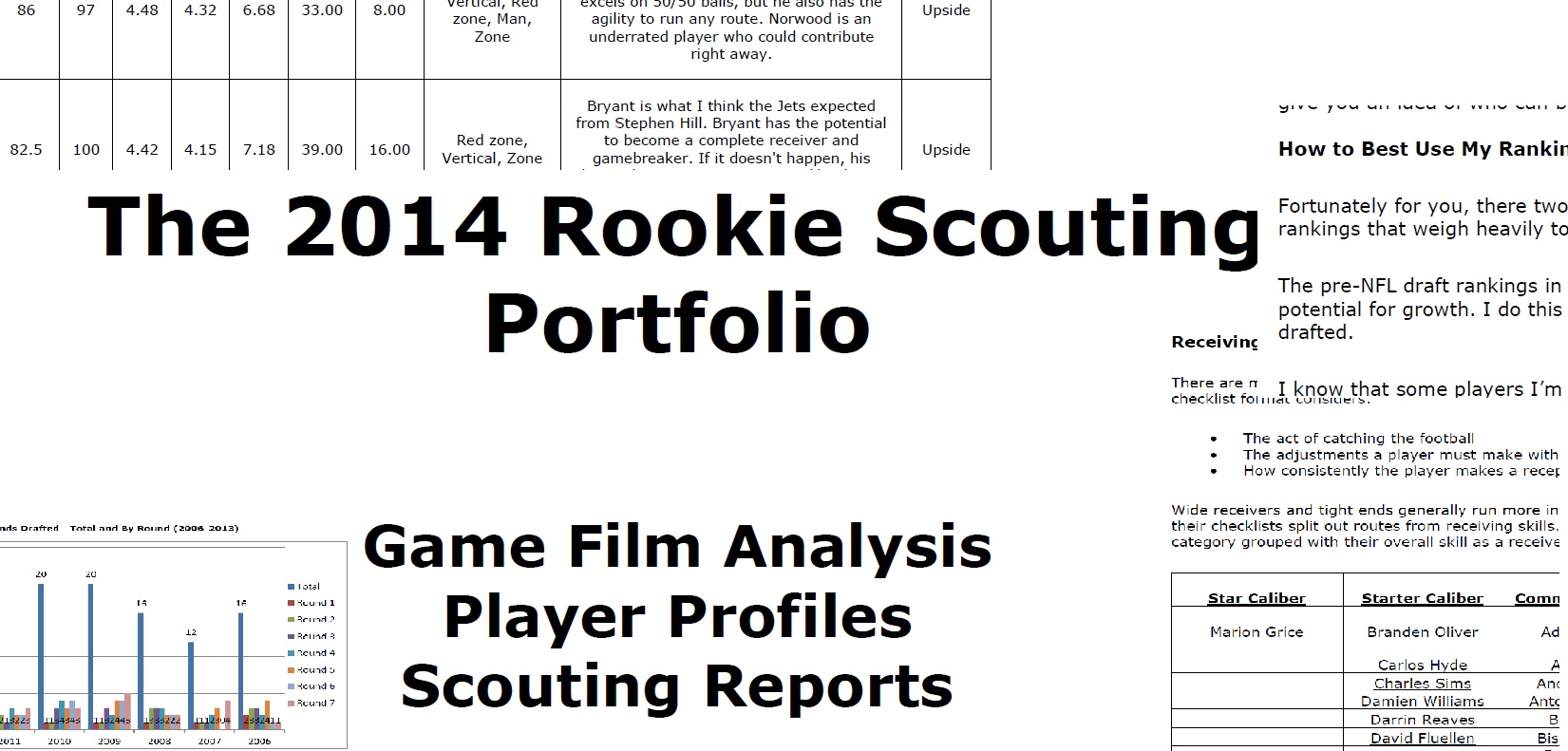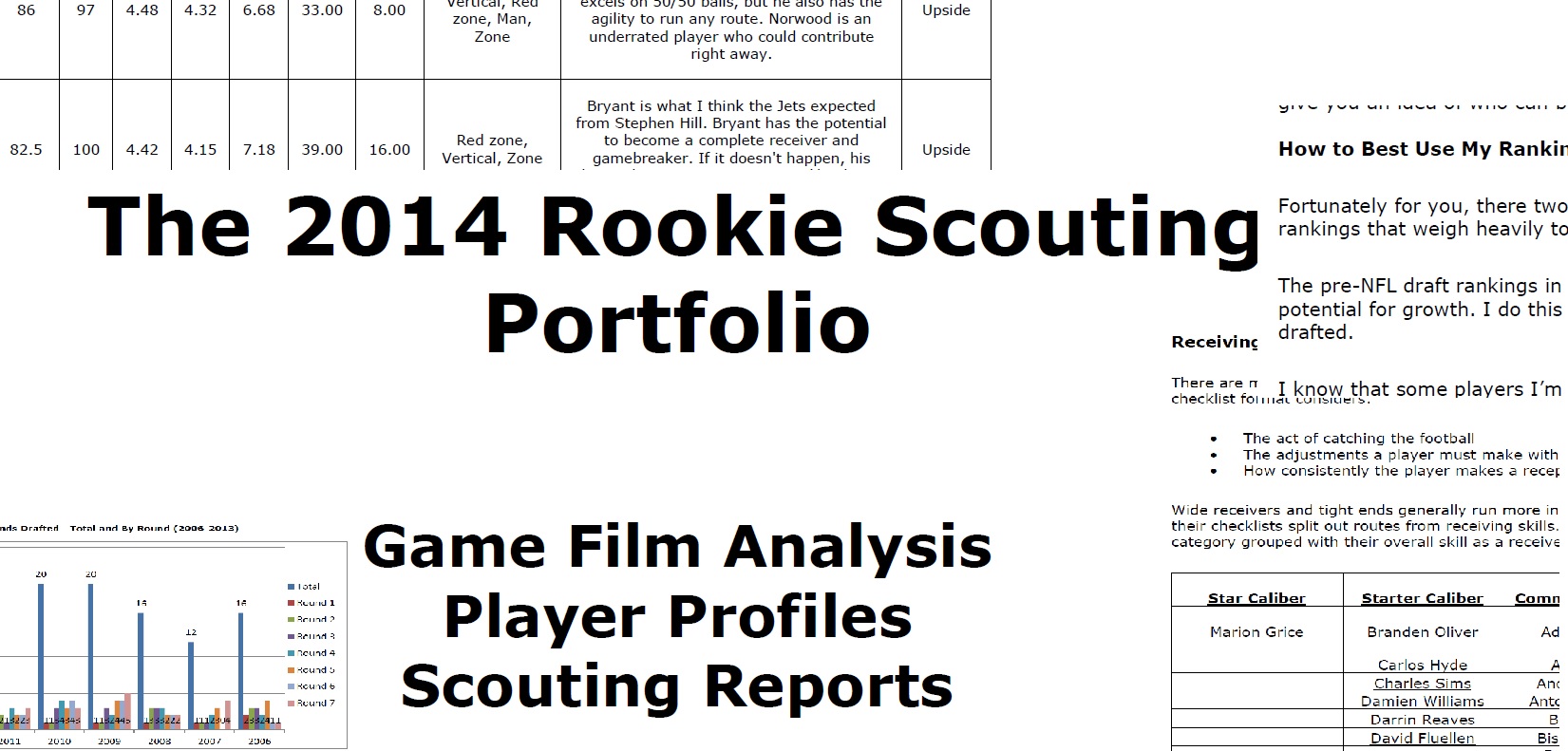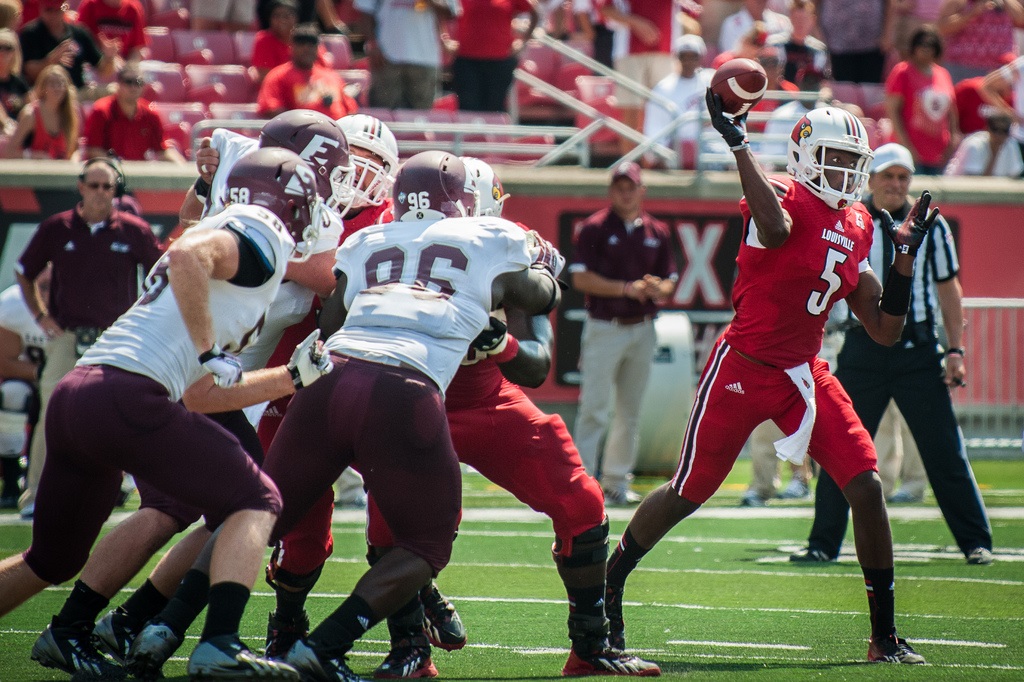The 2014 Rookie Scouting Portfolio is now available for download . . . really!
There’s a first time for everything . . .
For the first time in over 700 posts, I hit “publish” instead of save and it had to be the post I was saving to announce the RSP and I can’t even blame it on the family pet. All’s good now. The 2014 Rookie Scouting Portfolio is ready for download.
The 2014 Rookie Scouting Portfolio Tale of the Tape
Standing at 1284 pages and covering 164 skill prospects, the 2014 Rookie Scouting Portfolio is now available for download at www.mattwaldman.com. Because a post-draft addendum is now a regular part of the RSP purchase, it has allowed me the luxury to weigh my rankings less on draft stock and more on talent until we see how opportunity knocks at the NFL Draft. Take video tour.
As was the case last year, many of the climbers and fallers in my pre-draft rankings surprised me. I look forward to sharing more of my thoughts about these players and the process in the coming weeks.
Here’s what my readers have to say about the RSP:
“You should also know, that in fifteen years of playing fantasy football (I started in 1999 – Senior year of high school), I have never paid for fantasy football information. Not magazines. Not websites. Nothing. I read/listen to everything possible as I digest information and draw my own conclusions. I was apprehensive about ‘wasting’ twenty dollars. Thank you for the hours spent doing something you love. I appreciate it. Again, quality in-depth work. I would would pay double the price. Easily. Get some sleep.” – Josh Corbett
“Purchased the RSP by @MattWaldman for the first time. Lots of “holy ____”‘s were said in an empty house. Incredible work” Zack Henkle via Twitter
“The only thing I have read that I looked forward to more than the RSP was the Harry Potter books. Football Nerd Goodness” – Lisa London
“I truly think the RSP is the best draft resource money can buy.” -Ryan Lownes, Draft Analyst for DraftBreakdown.com
” Best pre-draft scouting report on every conceivable guy [at the skills positions] is by @MattWaldman. Very good read – mattwaldman.com.” –Chris Brown, author of Smartfootball.com and Grantland contributor
“Just pre-ordered my annual copy of football gold.” – Aaron Statts via Twitter
“Yours is the ONLY publication I ever pay for in fantasy football. Mahalo for the quality!!!” – Jim
“Can’t wait for the #RSP. I am like Billy Madison on nudie magazine day! – Matt Austin via Twitter
“I first experienced the RSP last year and after reading several pages, you got me for only god knows how much time you’ll be doing it. I’d prepay this for the next ten years easily. I mean it in the most sincere way, this has become my most anticipated read of the year and once again, I know it will be awesome.” – Dom
“BTW, I first purchased your RSP in 2011, won my league that year, had a middling team, repeated in 2012, still a middling team. How I have used RSP the most is during the season for my waiver pickups, always nice to reference your report when trying to decide between a few players. Thank you again. Oh, btw, the other 11 owners think I am lucky, lol, I am but for different reasons than THEY think 🙂 ” – Warren
“You won’t find a better resource. Matt Waldman delivers. Period. Cannot recommend more highly.” – Bob Harris, FSTA Hall of Famer
“Best dynasty rookie document there is. Can’t live w/o it.” – Tim Stafford, Dynasty League Football staff writer.
“In case you guys havne’t heard, @MattWaldman’s RSP will be availalble April 1st. A must buy for fans of the NFL Draft.” – BillsTalk.com via Twitter















